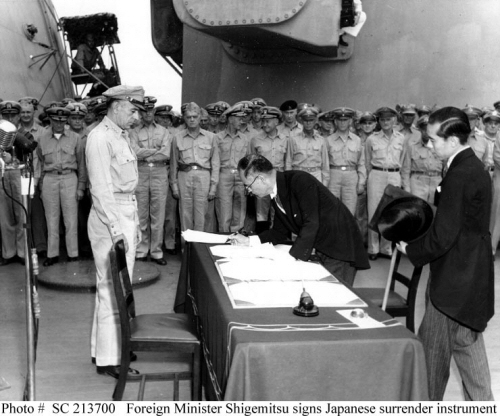Military Milestones from Spain’s White Flag to a Pillar of Purple Fire
Originally published at Human Events

This week in American military history:
Aug. 9, 1945: The second — and thus far, last — atomic bomb used in war is dropped over the Japanese city of Nagasaki.
The bomb, code-named Fat Man, detonates approximately 1,840 feet above Nagasaki (see the Horror of Hiroshima) between the city’s two Mitsubishi plants.
New York Times science writer William L. Laurence, an observer flying on the mission, will write:
“A tremendous blast wave struck our ship and made it tremble from nose to tail. This was followed by four more blasts in rapid succession, each resounding like the boom of cannon fire hitting our plane from all directions.
“Observers in the tail of our ship saw a giant ball of fire rise as though from the bowels of the earth, belching forth enormous white smoke rings. Next they saw a giant pillar of purple fire, 10,000 feet high, shooting skyward with enormous speed.”
Aug. 12, 1898: Hostilities are suspended between the United States and Spain with the signing of an armistice all but ending the war (which will formally end within the year).
Spain basically caves, relinquishing “all claim of sovereignty over and title to Cuba.” Puerto Rico and other Spanish-held islands in the West Indies are ceded to the U.S.
Manila will fall to American forces the next day.
Aug. 14, 1942: U.S. Army Air Forces 2nd Lt. Elza E. Shahan, flying a P-38 Lightning, scores the first American aerial victory in the European theater of operations when he finishes off a previously damaged German Focke-Wulf FW 200 Condor near Iceland.
(The 21st-century F-35 Lightning II is the namesake of the famous World War II-era P-38.)
Aug. 14, 1945: Nearly 47 years to the day after Spain hoists the white flag to American forces, Japan surrenders unconditionally to the same.
World War II is over.
Aug. 15, 1845: The War Department transfers Fort Severn, Annapolis to the Navy Department, specifically the new Naval School under Commander Franklin Buchanan.
The U.S. Naval Academy is established.
Franklin, who serves as the school’s first superintendent, is destined to become an admiral in the Confederate Navy.
Aug. 15, 1945: Japanese Emperor Hirohito broadcasts his surrender message to the Japanese people, a portion of which reads:
“…the war situation has developed not necessarily to Japan’s advantage, while the general trends of the world have all turned against her interests. The enemy, moreover, has begun to employ a new most cruel bomb, the power which to do damage is indeed incalculable, taking toll of many innocent lives. Should we continue to fight, it would only result in the ultimate collapse and obliteration of the Japanese nation … but would lead also to the total extinction of human civilization.”
Hours before the radio broadcast, Japanese Army Maj. Kenji Hatanaka — leading a group of diehards opposed to surrender — attempts a coup to prevent the broadcast. The coup fails. Hatanaka commits suicide.
AUTHOR’S NOTE: “This Week in American Military History,” appears every week as a feature of HUMAN EVENTS.
Let’s increase awareness of American military tradition and honor America’s greatest heroes by supporting the Medal of Honor Society’s 2010 Convention to be held in Charleston, S.C., Sept. 29 – Oct. 3, 2010 (for more information, click here).